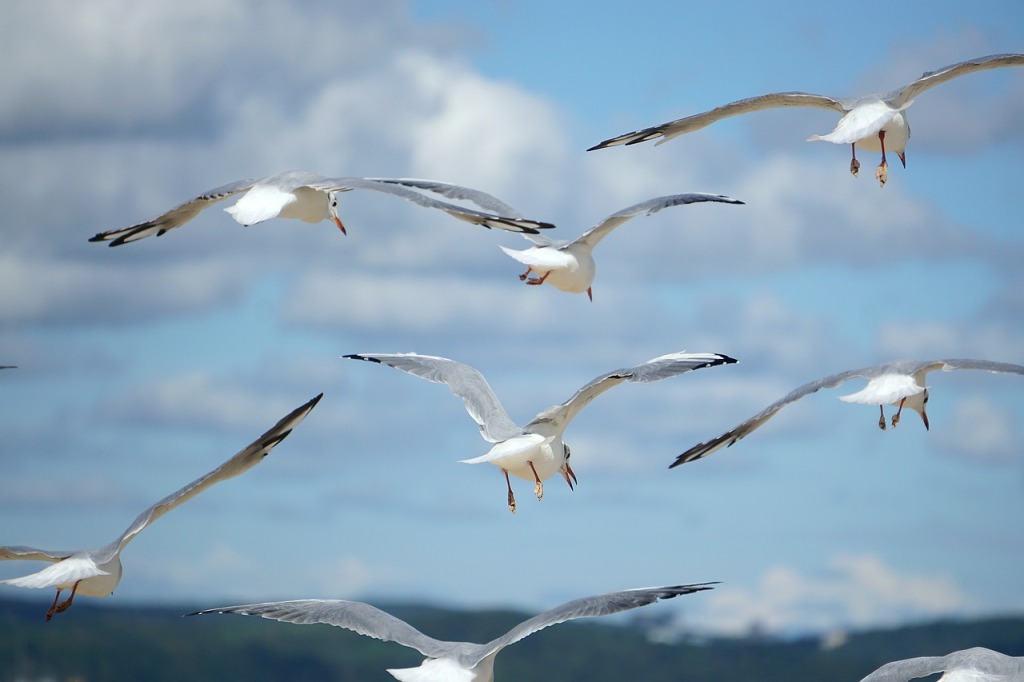Eelke Folmer and Jaap van der Meer talk about their recent Forum paper which comments on an earlier research article, and discuss the importance of evidence based decisions in policy.
Background
In the coming decades, the growth of the global human population will lead to an increase in food demands. This, in turn, is likely to result in a rise in the extraction of marine animal protein through wild capture and aquaculture.
This increasing pressure on the marine environment poses a significant environmental challenge and raises concerns. For example, dredging of the seafloor can damage habitats leading to a loss of biodiversity and bottom trawling often results in by-catch and mortality of non-targeted species. Decisions about how to manage marine resources and mitigate the damage caused by human activities, should be based on solid scientific knowledge.
In our paper (Van der Meer and Folmer, 2023) we expose serious shortcomings in two influential studies (Piersma et al. 2001 and Van Gils et al. 2006) on the impact of mechanical cockle dredging on invertebrate communities and associated bird life in the Dutch Wadden Sea and show that the main conclusions were not supported by empirical evidence.
This blog summarises the results of our paper and further explains why it is hard to find convincing evidence for any cause-and-effect relationships between human disturbance and intertidal communities. Finally we plead for intellectual modesty and provide suggestions for improving discourse in science and society.
Re-analyses
First study
The first study by Piersma et al. (2001) hypothesized that seafloors require time to recover from mechanical disturbance and analyzed bivalve recruitment in the period 1990-1999, after cockle dredging in the late 1980s. There were four dredged sites, and three non-dredged controls of which two were paired.
It was predicted that shortly after dredging, recruitment in the dredged areas would decrease, followed by a recovery period leading to similar recruitment levels between the dredged and non-dredged sites. The data were grouped into two periods (1992-1994 and 1996-1998), and the researchers indeed found a pattern of initially low recruitment in the dredged sites. It was concluded that it took 8 years for recruitment levels to recover.
Our re-analysis involved examining all available data and unlike the original study, we did not find a pattern of initially low recruitment followed by an increase in dredged areas compared to non-dredged areas. The difference only emerged for this very specific selection of years, but it disappeared when all data were considered.
Second study
In the second study it was concluded that cockle dredging caused a reduction in the number of red knots in the Dutch Wadden Sea and a decline in the European wintering population during the period 1998-2002.
The study classified 1×1 km blocks of intertidal flats in the Wadden Sea as suitable or unsuitable based on potential foraging rates. A block was deemed suitable if knots could maintain their energy balance by feeding on it for 10 hours and unsuitable if they could not.
The study also determined whether a block had been dredged or not during the 5-year study period using data from GPS loggers on fishing vessels. During the study period, the percentage of unsuitable blocks increased from 66% in 1998 to 87% in 2002. Because the number of unsuitable, never-dredged blocks remained constant, it was concluded that this was due to an increase of previously suitable blocks that were dredged.
While superficially this conclusion might appear intuitively plausible, it is incorrect. The same pattern would emerge if the number of suitable blocks decreased due to causes unrelated to fisheries and fishers target suitable blocks (which they do because that’s where the cockles are). It should be noted that recruitment of bivalves in the Wadden Sea is very variable between years and that populations consist of only a small number of cohorts.
We re-analyzed the data by considering all combinations of suitable/unsuitable and dredged/never-dredged and showed that the never-dredged area had a faster shrinking fraction of suitable blocks than the dredged area. For all years, we found a positive correlation between dredging and suitability!
This, however, does not imply that dredging caused the increase in suitability. But it does show that the original conclusion, that dredging caused a decline in foraging suitability for red knots, is not supported by the data.
Why is it important?
The densities and distributions of benthic species in intertidal environments are highly variable and are influenced by multiple factors. As a result, it is challenging to establish clear cause-and-effect relationships between human activities, such as fisheries, and the responses of invertebrate and bird populations. This does not necessarily mean that there are no effects, but rather that they are difficult to detect.
Consequently power analyses, which are used to determine the sample size needed to detect an effect of a given magnitude, typically reveal that very large and long-term datasets are necessary to detect effects on bivalve populations. Without such large datasets, it may be difficult to detect possible changes in bivalve populations resulting from human activities such as fishing.
By drawing unsupported conclusions, the papers that we criticized not only impaired the understanding of the impact of mechanical dredging on benthos and birds, they also (implicitly) suggested that small and relatively short-term datasets may be sufficient to develop ecological understanding and serve as a basis for informed decisions.
Path forward
Politicians or institutions taking positions that are not in line with scientific evidence cause mistrust, division and lack of faith in political decisions or institutions. In such cases people’s beliefs and opinions are shaped by emotion and agenda’s rather than by science creating confusion and polarization.
In politics truth and uncertainty can be inconvenient and there are tendencies to suppress them. But in science there is no place for the suppression of truth and ignorance, because they hamper the understanding of the world around us. Politics and policy-making must be guided by solid scientific evidence if it intends to make informed decisions that will benefit both the environment and society.
The most productive way forward for science and decision making is to follow a path of intellectual modesty, honesty and clarity about what is known and what is hypothesis. Accepting uncertainty does not imply that decision making is undermined – decisions can be made under uncertainty and lessons can be learned.
When it comes to science and decision making in the Wadden Sea, broadening and deepening of monitoring- and research programs that account for the complexity and variability of the intertidal systems is required. The challenges involved include the development of understanding of the effects of climate change, mining, pollution, fishery and dredging.
It will help if at the onset of research programs, researchers and practitioners with different backgrounds and perspectives engage in critical dialogues and discourse and maintain a skeptical attitude towards existing ideas and knowledge and that confirmation bias is avoided. By doing so, we can gain a better understanding of intertidal ecosystems, and work towards more sustainable and responsible management practices.
Read the full forum article ‘A re-evaluation of the effects of mechanical cockle dredging in the Dutch Wadden Sea’ in Journal of Applied Ecology




